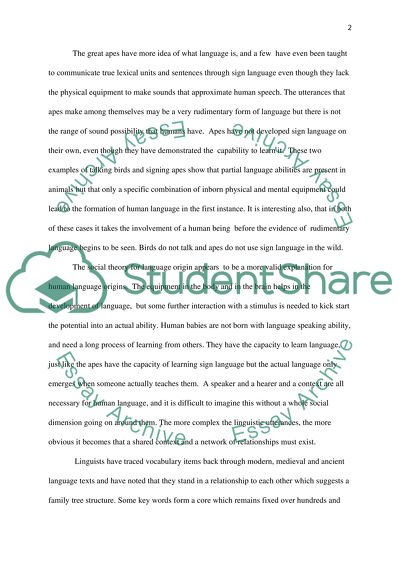Cite this document
(Genetic and Social Theories of Language Essay Example | Topics and Well Written Essays - 1000 words, n.d.)
Genetic and Social Theories of Language Essay Example | Topics and Well Written Essays - 1000 words. Retrieved from https://studentshare.org/education/1571677-linguistics-essay
Genetic and Social Theories of Language Essay Example | Topics and Well Written Essays - 1000 words. Retrieved from https://studentshare.org/education/1571677-linguistics-essay
(Genetic and Social Theories of Language Essay Example | Topics and Well Written Essays - 1000 Words)
Genetic and Social Theories of Language Essay Example | Topics and Well Written Essays - 1000 Words. https://studentshare.org/education/1571677-linguistics-essay.
Genetic and Social Theories of Language Essay Example | Topics and Well Written Essays - 1000 Words. https://studentshare.org/education/1571677-linguistics-essay.
“Genetic and Social Theories of Language Essay Example | Topics and Well Written Essays - 1000 Words”, n.d. https://studentshare.org/education/1571677-linguistics-essay.


